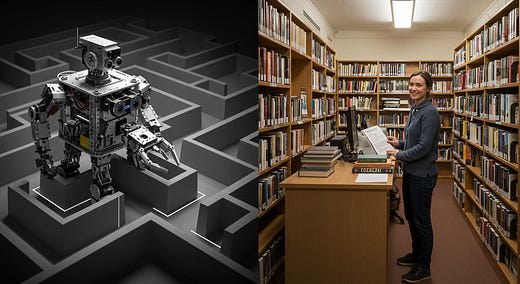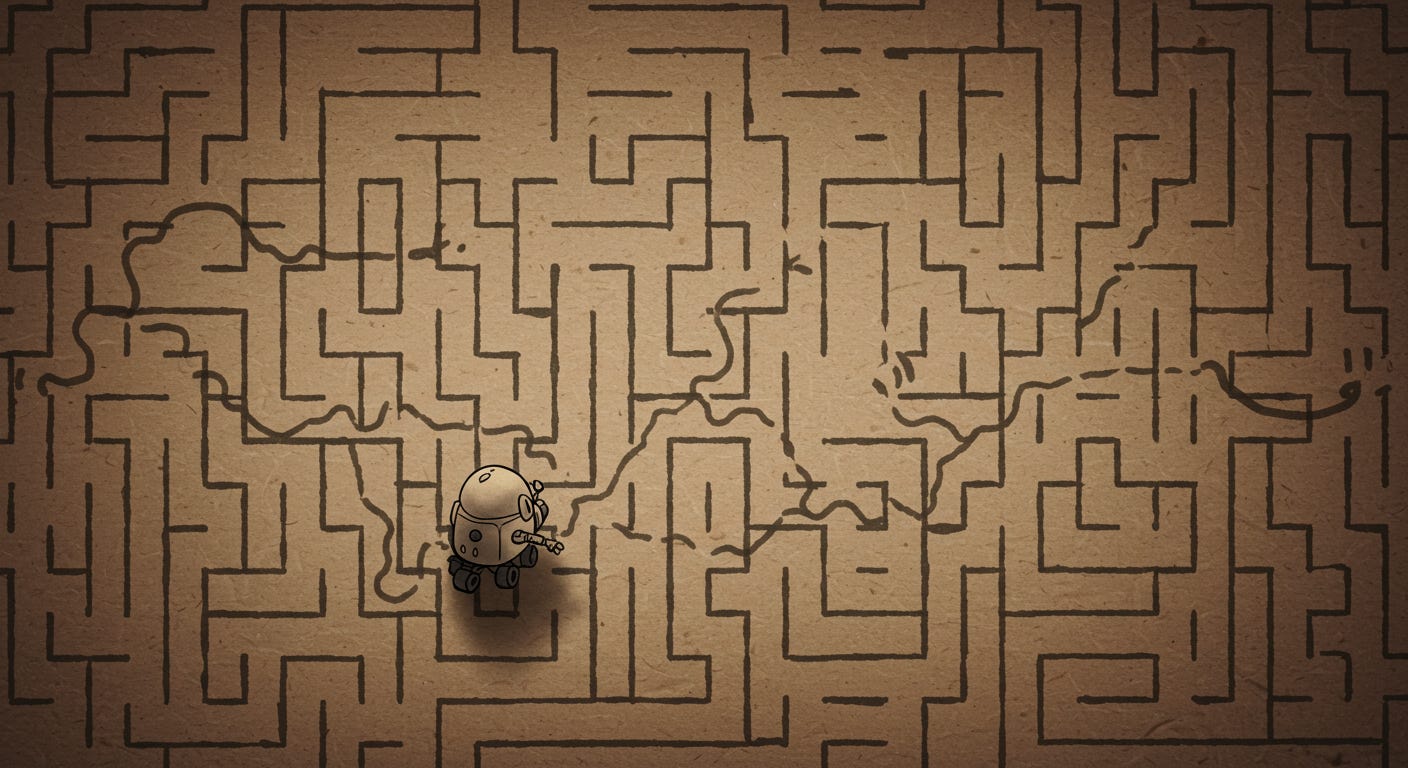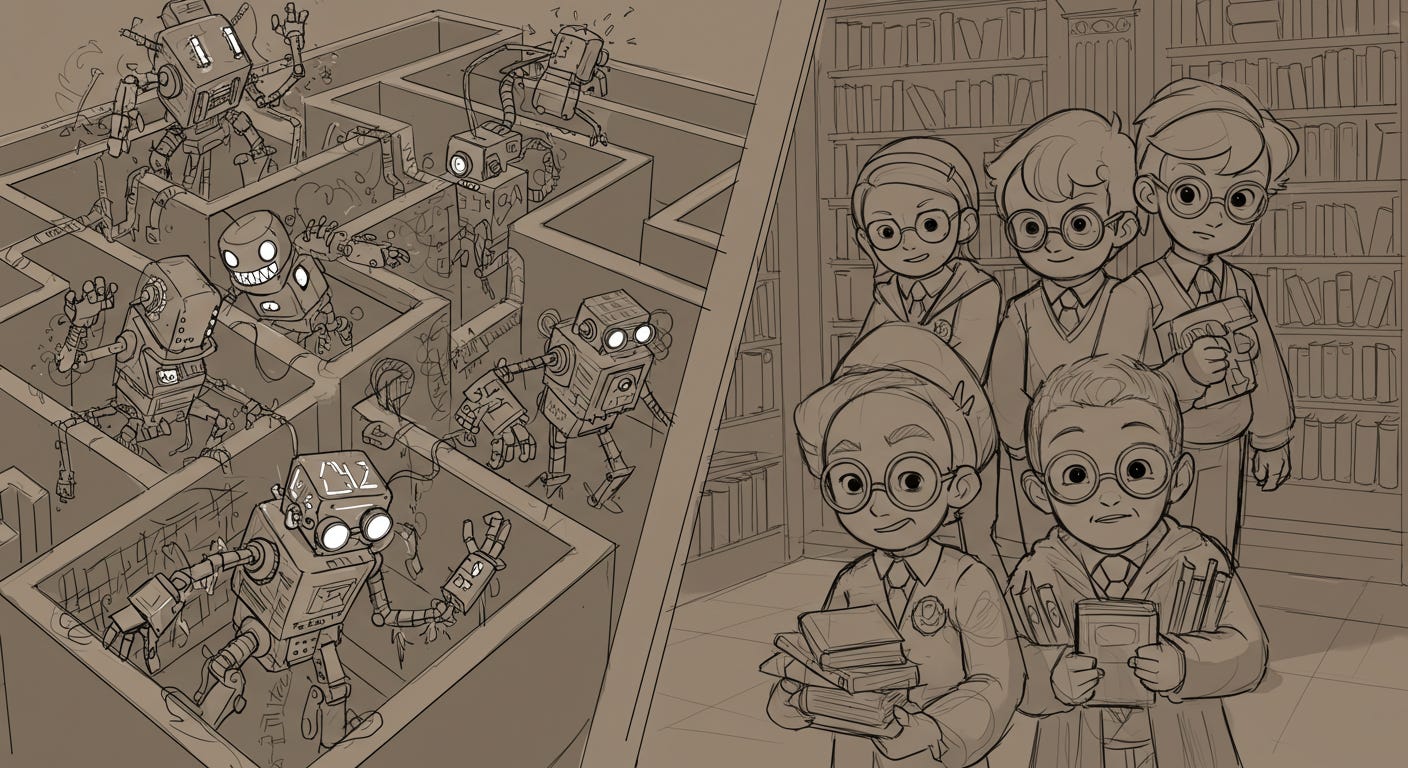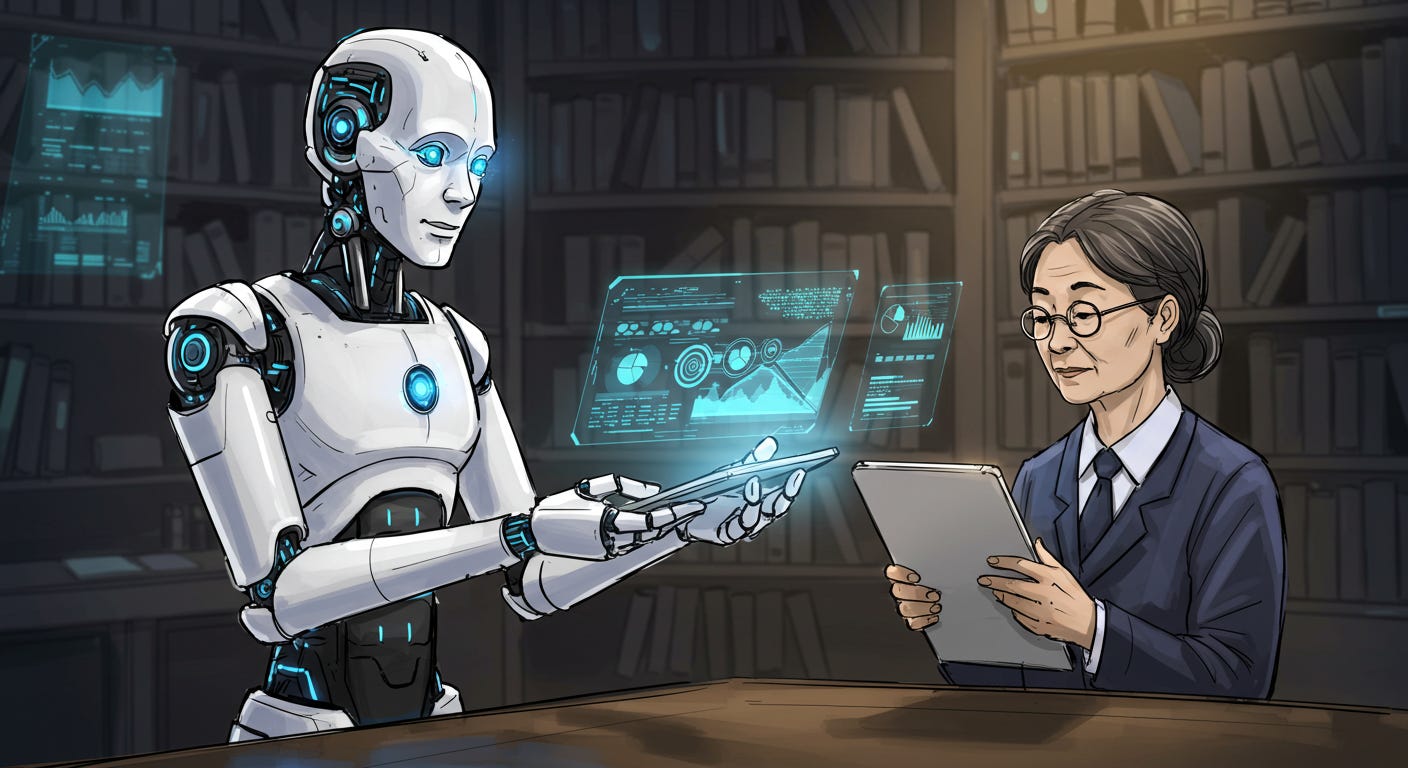Maze Robots vs. Super Librarians: Inside the Two Minds of AI
If you’ve ever used a GPS app that recalculates after a wrong turn—or asked ChatGPT a question—it might surprise you to learn these AI tools are based on two vastly different approaches to “thinking.” But both matter in shaping our tech-driven future.
The Maze Robot Mindset: Learning By Doing
Picture a small robot navigating a tricky maze. Each turn is a new experiment—one path leads to a dead end, another leads closer to the exit. This iterative trial-and-error perfectly illustrates reinforcement learning (RL).
Active Exploration: The robot doesn’t just follow a script; it tries actions, observes the outcome, and adapts.
Reward-Driven: Each successful turn that moves it closer to the goal is positively reinforced, making it more likely the robot will repeat that path.
Continuous Updating: Just as a self-driving car learns from each minute on the road, maze robots get smarter with every twist and turn.
> Real-World Example: Self-driving cars that “learn” to navigate traffic or industrial robots that optimize their movements on an assembly line.
The Super Librarian Mindset: Rapid Recall
Now, imagine someone who’s read every book in existence. When you ask a question, they immediately respond with relevant facts. This is how large language models (LLMs) like ChatGPT or Bard operate.
Pattern Recognition: By consuming huge volumes of text, they learn what words typically appear together and in what contexts.
Instant Retrieval: Once trained, they can generate answers on the fly—like a master librarian who’s memorized entire catalogs.
Static Knowledge: Training is done upfront. After that, any new knowledge has to be added in the next “edition,” so real-time learning is limited.
> Real-World Example: ChatGPT summarizing a lengthy research paper in seconds or drafting an email that sounds just like you.
Why We Need Both
1. Adaptability Meets Expertise
Maze Robots thrive in unpredictable, dynamic environments—like congested highways or financial markets that shift hourly.
Super Librarians excel when the knowledge is broad but relatively stable—such as summarizing historical data or providing quick answers to common questions.
2. Bridging the Gap
Future innovations might pair the continuous learning of maze robots with the deep knowledge base of super librarians.
Imagine an AI healthcare system: a “maze robot” software that learns from patient data in real time, feeding new treatments or findings into a “librarian” system that doctors worldwide can query instantly.
3. Reshaping Industries
From education (personalized tutoring that adapts to your learning style in real time, but also references the entire internet’s worth of knowledge) to cybersecurity (alert systems that learn from attacks as they happen and instantly update a global knowledge base), the synergy is already happening.
Key Takeaways
No One-Size-Fits-All: Both paradigms excel at different tasks.
Maze Robots = Real-Time Exploration and Adaptation
Super Librarians = Instant Expertise, But Static Once Trained
Collaborative Future: The strongest AI solutions will blend these strengths, paving the way for systems that are both deeply knowledgeable and perpetually learning.
Looking Ahead
Next time you consult an AI—be it a navigation app that seems to “learn” from traffic patterns or a chatbot that churns out historical trivia—ask yourself: Is it exploring a maze or consulting a library? The question might reveal which type of AI you’re dealing with and why it excels at certain tasks but struggles with others.
And in a not-so-distant future, these two approaches may merge in powerful ways: maze robots feeding fresh discoveries into super librarians, who in turn refine their answers for the rest of us. When that happens, we won’t just have AI that can solve problems—it’ll also tell us exactly how it got there.
Which AI do you rely on more in your daily life—an explorer or an encyclopedia? Let me know in the comments!
Join the Conversation
If you enjoyed this exploration of AI’s dual nature, consider subscribing to my Substack. You’ll get fresh insights on the technology shaping our world, and learn how to harness it to your advantage—whether you’re a curious novice or a seasoned pro.
End Note
Both approaches—learning by exploration and harnessing existing knowledge—are vital in AI’s evolution. By understanding how each works, we can better appreciate the power behind the tools we use every day. And more importantly, we can steer their development in ways that benefit us all.
Thanks for reading!









